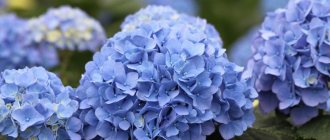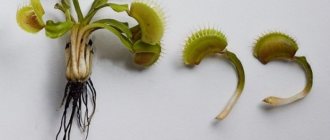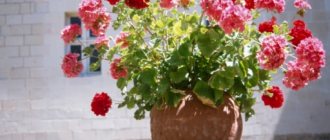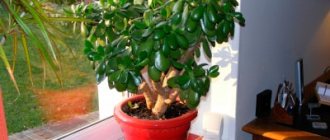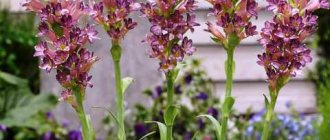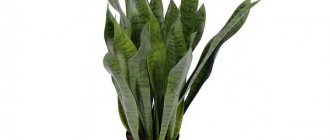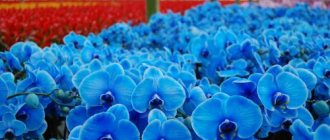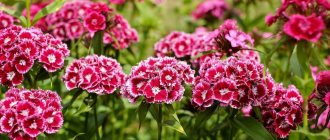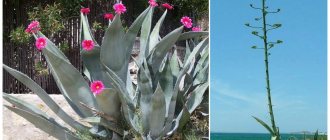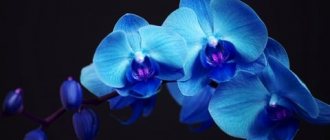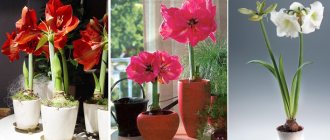Are you a skilled gardener and love to surround yourself with all kinds of vegetation? Then you are at the right place. True, we will not tell you about caring for violets, ficus or echeveria - we have moved on. Bonsai is the hero of today's material. What to do with a dwarf Japanese tree if it ends up in your apartment? How to care for bonsai? Let's study this topic more carefully.
Bonsai is a tiny tree that has been used for decoration in many traditional Japanese homes for centuries. However, bonsai is also quite popular in our country as an unusual and “living” part of the interior. The main components of proper care: light, soil, watering, replanting, fertilizers.
Light
The tree needs 6 hours of sunlight every day. If the plant is in a dark place, then the lighting should be increased to 12 hours a day. Do not overdo it with electric light - the plant may be damaged. It is clear that in our climate it is difficult to care for bonsai, providing many hours of natural light. Especially when it's winter or autumn outside. However, try to move the tree during the day, maybe move it to another room, to provide the plant with the highest possible level of light and comfort.
What is bonsai
Pun sai or bonsai is a tree with a thickened trunk, a properly formed crown, and a height of 20 cm to 2 m. Growth is hampered by a lack of minerals, regular pruning of branches, young shoots, and roots.
Bonsai sizes may vary:
- large – 60-120 cm;
- average – 30-60 cm;
- small – 15-30 cm;
- miniature, “nail size” or “baby” – 5-15 cm.
Indoor bonsai
The soil
Select soil for your type of plant in special stores. If you have a coniferous tree, buy soil for coniferous trees; if you have a deciduous tree, plant it in the appropriate soil. Good soil is when it is “aerated”, i.e. the air moves back and forth. It also ensures proper interaction with water. The liquid should sufficiently moisten the plant and flow down. The optimal soil pH should be between 6.5 and 7.5.
Tekkan
One of the most common styles, suitable for almost any plant, especially conifers . Translated as “correct upright form.”
The style is characterized by a conical straight trunk with massive roots evenly spread in different directions. The crown is characterized by a conical or spherical shape; closer to the top, the size of the branches decreases proportionally. Shoots should appear at a distance of ¼ of the entire height of the plant.
The main trunk is divided into 3 equal segments:
- in the lower part the branches are completely absent, thanks to which you can see the bark, trunk and roots located at the surface;
- in the middle there are three main branches, one of which grows to the right, the second to the left, the third is directed towards the beholder;
- the branches of the upper part are located in different planes, they rise up and form a crown.
Moyogi
Means "irregular upright". The trunk can be bent in any part, there can be several bends, their number decreases towards the top. The roots should protrude above the soil surface. The plant is planted asymmetrically. Suitable: oak, maple, juniper, pine.
Kengai
It means “cascade form”, it is labor-intensive, suitable for naturally plastic plants such as juniper, azalea, cotoneaster.
The container needs to be high, the top of the tree falls below the top edge of the container. For the cascade, a table-stand with high legs is made.
The trunk at the very base can be vertical, then it bends down. The shoots alternate on the outer curves on the left and right and are placed horizontally to ensure visual balance in the composition.
Syakan
Translated from Japanese - “sloping”. The plant is grown with a thick or thin trunk bent forward and differs from a tree growing in the wind in that shoots grow from both sides of the trunk.
It is used for both coniferous and deciduous species: thuja, pine, juniper, maple, birch, oak. Plant the plant in an oblong container.
Hokidachi
Translated it means “broom or fan.” The fan style is used for: elm, maple and other deciduous trees with thin long shoots .
The trunk remains straight and, before reaching the top, branches out to the sides at a distance of 1/3 of the entire height of the plant. The crown is formed dense, spherical.
Have you tried growing mini trees at home?
Yes, it's growing for me.
26.67%
There were unsuccessful attempts.
33.33%
I know that I don’t have enough patience, so I don’t even dare.
13.33%
I haven’t tried it, but it looks very unusual and beautiful, so I’ll take note.
26.67%
Voted: 15
Shokan (sokan)
Split barrel style. Two trunks, differing in length and thickness, grow from the same root system. The larger and thicker one grows almost vertically, the smaller trunk with a slight slope, while forming a single crown.
For planting use: elm, birch, spruce, juniper, pine.
Kabudati
Translated as “multi-barrel” and is an analogue of the double-barreled style. It is distinguished by the presence of two or more trunks, and the thickest of them should also be the tallest.
Yose-ue (Yose-Ue)
The “grove” style resembles a multi-trunked one. The main difference is the presence of several completely separate trees of the same species, differing in age, thickness and height . Evergreen and deciduous trees are used in quantities of at least 5 pieces.
The tallest trees are planted in random order in the middle of a shallow container, with several small plants planted on the sides. Together they form a single crown.
Tarimiki
Or “tree without bark.” The style is complex in execution; the trunk of the plant resembles a dead tree without bark . The bark is removed with a sharp knife and bleached after drying.
Sekiyoyu
Translated as “tree on a stone.” The plant's roots unevenly braid the stone, after which the roots go into the soil of the pot. Suitable for this style: ficus, juniper, cedar, pine.
Ikada (ikadabuki)
Translated from Japanese - “raft”. The peculiarity lies in the method of planting. The plant is planted horizontally, forming branches so that they look like trunks.
For such purposes they use: Cossack juniper, ficus, euonymus.
Neagari
The name translates as “naked roots.” For the style, only plants that form aerial roots are applicable: ficus tribe, Bengal ficus, etc. The roots protrude from the ground and give the trunk an unusual appearance .
Watering
How often should a tree be watered? Once a day, a week or maybe 2 times a month? This point is the most difficult in matters of how to care for bonsai. Nevertheless, everything matters in watering: what time of year it is, the daily portion of sunlight, the type of soil, the type of tree and its age. You can develop a suitable watering system only by observing the appearance of the plant and the dryness of the soil. If the tree becomes dull and the ground is 2-3 cm dry, it’s time. Watering may be required once a day or only 3 times a week. Over time, you will learn to understand how much your bonsai needs to “drink”. So, general watering tips for all trees:
- Water the plant preferably in the morning.
- In summer or other warm days, water the tree more deeply than usual.
- In winter, water no more than once a week. During this period, the plant is dormant.
- Watering is directly related to sunlight. The longer the tree stays in the illuminated place, the more water it requires.
- During the period of bonsai development and growth, try to water it regularly so that the plant adjusts to the water supply schedule.
- Also, don’t forget to check the soil for dryness. Carefully feel the soil with your finger without touching the roots.
How to grow a miniature Crassula tree with your own hands?
When working with an adult Crassula, you will have to subordinate your ideas to the original size of the plant. By growing a tree from a sprout, you can form the most interesting forms of bonsai .
But in the latter case, you will have to wait until the Crassula stem becomes woody.
Selection of capacity
To create a bonsai from a home plant, it is important to choose the right container. It is advisable to use a special container - low but wide, which will limit the space for the root system of the money tree.
A prerequisite is that the pot must have drainage holes.
Landing
The best soil for Crassula is soil for cacti or succulents . The soil mixture should be loose. Light soil perfectly allows air to pass through, which is important for the full development of the root mass.
To prevent the soil from being washed out of the dishes, you need to cut off several pieces of cellular vinyl mesh, square or rectangular in shape. Size – larger than the bottom of the container . The mesh cells should be smaller than the drainage hole.
Prepare copper wire (7 cm) and make a loop along the edges. Thread the resulting curves into the drainage hole, securing the mesh. In a similar way, attach a piece of wire to the bottom of the container to secure the succulent.
Further progress:
- Prepare Crassula. Clear its root system from the soil.
- Gently untangle the roots and straighten. For convenience, it is recommended to use a crochet hook.
- Trim the roots of the fat plant so that they fit into the selected container .
- Cut off dead areas and those that grow downwards.
- Cut off bare and weak branches of the money tree.
- Use pruning shears with a concave blade to cut off opposite branches.
Pour a small amount of soil into the pot. Place the succulent in a bowl, carefully distributing the root system. Pour the rest of the soil into the container and water it with settled water.
This video shows root pruning and replanting a money tree.
Transfer
How to care for bonsai without replanting? Alas, sooner or later you will still be faced with the need to replant the tree. The best time to move a tree to another “home” is spring. During the cold period (dormant time for bonsai), the plant strengthens its roots and is psychologically ready for replanting.
In general, the plant should be replanted annually or only once every 5 years. By the way, young trees will more often require moving, and older bonsai can easily remain in the same pot for up to 5 years. If the leaves of the tree turn light yellow, young ones appear, and buds form on the stem, it’s time to replant.
Olive Tree
This species is considered one of the easiest to grow unpretentious bonsai. Even for those who grow olive trees as indoor or garden plants, this tree in bonsai form can offer many pleasant surprises.
It is believed that the European olive (Olea europaea) feels better in winter gardens and on staircases, but in the warm season it will decorate any living space.
Bonsai created from European olive is characterized by amazingly beautiful bark. It is an evergreen plant with gray and very strong bark, grayish-green leaves and a beautiful silhouette of branches.
The maximum height of bonsai is limited to 80 cm, although most often olives are sold in the form of 10-20 cm miniatures. Olive in bonsai blooms in July-August.
Olive is grown only in sunny or brightly lit places. But she will need not only intense lighting, but also frequent ventilation and access to fresh air. Bonsai prefers to spend the entire summer outdoors. For an olive tree, you need to maintain constant light soil moisture, but it is more than tolerant of dry air.
Olives are formed all year round, excluding only the period before and during flowering. The basic principle of pruning for this type of bonsai is that all branches above 15 cm in length are shortened to the first, second or third pair of leaves. If desired, an olive tree can be formed not only in the form of an upright growing tree, but also a cascade and a semi-cascade.
The olive tree overwinters in cool conditions, at temperatures from 5 to 10 degrees.
Fertilizers
Trees are usually planted in small pots, so bonsai are in greater need of feeding. Potassium, nitrogen and phosphorus fertilizers are well suited for the plant - they are responsible for the green color of the leaves, the development of roots and the appearance of flowers. Moreover, you need to care for your bonsai with fertilizers regularly at least 3-5 times throughout the year.
Don't forget about the appearance of the bonsai! The tree takes on new beautiful shapes with proper pruning of branches and shoots. It is better to remove excess branches in the spring and only with sharp tools, so as not to accidentally harm the plant. As a sign of gratitude for your careful care, the bonsai will decorate your home and fill it with a lemon-pine aroma for many years.
Text:
Erecia parvifolia
This plant is rightfully considered not only one of the most spectacular, but also the largest bonsai.
Aerial roots, light bark, a fancifully curving trunk and pubescent leaves highlight erectia (Ehretia microphylla, synonym - small-leaved carmona, Carmona retusa) in any collection. This bonsai is grown in winter gardens and in all types of living rooms.
Erecia smallifolia is an evergreen tree with a height of 15 to 80 cm that requires some effort to contain its size. But karmona has many other advantages. The bark is light, brownish-gray, with very beautiful cuts that emphasize the bend of the trunk and branches. And the dark leaves of the erection, covered with white hairs at the top of the leaf blade, seem both miniature and massive at the same time.
Carmona, unlike many other trees used for bonsai, continues to flower almost all year round. And you can endlessly watch the metamorphoses - from tiny buds to snow-white flowers, and then to green, gradually turning red berries.
The most difficult thing in growing carmona is maintaining high humidity. And the requirement only for uniform soil moisture also does not make the growing process easier. But this tree can be grown and “watered” by immersion in water (directly with the trunk), and it is better to apply fertilizers in this way, immersing the plant in a weak solution.
Erecia feels great indoors, but from May to September it is better to find a place for it in the fresh air. Ventilation of rooms is very important, as is intense lighting.
This type of bonsai needs constant containment. The plant is bulky and tends to return to its natural size. Therefore, the carmona is not so much sheared as it is wrapped with wire for more aggressive containment. Carmona is very impressive not in its upright form, but in its hanging “mountain” form and cascade.
Carmona can overwinter not only in cool conditions. Acceptable air temperature values are from 12 to 22 degrees. So this is one of the few bonsai that do well indoors all year round.
General characteristics of plants
Forming a bonsai is a long and labor-intensive process, during which the tree undergoes many manipulations: pruning the roots and crown, bending the trunk, removing certain fragments of branches. In addition, he has to survive in a cramped container with little soil, lack of nutrients and moisture. Indoor species often suffer from lack of sun, dry air, and too high or low temperatures.
Not all tree species can cope with all of the above, but only the most unpretentious ones, which even in their natural environment are forced to adapt to unfavorable factors: rocky or clay soil, frost, strong gusts of wind, etc. This is best achieved by representatives of mountain flora, as well as species growing in forests and roadside plantings without special care from people.
derevya_bonsay_v_sadu_happo-en.jpg
To understand what plants bonsai is made from, it is worth analyzing the unifying features of most traditional cultures used in this art. As a rule, they all have the following characteristics:
- small or medium-sized leaves;
- the roots grow predominantly not deep into the ground, but wide;
- small distance between the buds (short internodes);
- high ability to adapt to difficult conditions;
- drought resistance;
- flexibility of the trunk in the first years of life, resistance to mechanical damage;
- the ability to quickly regenerate damaged areas.
Advantages of decorative trees in the interior
The oriental style of the interior is restrained and calm. But even in such a minimalist design there is always a place for indoor plants. Japanese bonsai is a popular floristry trend that will fit perfectly into any room. Natural decor will look original in a classic living room or in a modern high-tech kitchen.
So that the bonsai does not look lonely and does not stand out as a green spot against the general background, you can place other plants in the room that are similar in the shape of the trunk or crown. Wall paintings with natural motifs will perfectly complement the interior.
Natural decorative trees of any size are simply created for rooms decorated with natural materials. Stone tiles, wooden lining, and massive furniture go well with Japanese wood. If the crown has a bright color, you can highlight it with the help of window textiles, pillows, and small accessories.
The main advantage of decorative trees in the interior is the ability to create a natural atmosphere. A miniature copy will become a central accent and will not go unnoticed upon entering the room. Thanks to the many styles, you can create an original decor to match your existing interior. Common bonsai options are “Classic straight”, “Tilted tree”, “Cascade”, “Two trunks”, “Roots on a rock”, “Rooted in a stone”.
Bonsai grown from seeds
Growing from seeds is the longest time-consuming method of forming a bonsai. It takes 12 to 15 years to produce approximately bonsai-like plants from seeds. Most plants sold in gardening centers and nurseries are of this age. Why is such a long journey needed?
There are some types of trees in which optimal shape can only be achieved if you begin to shape the plant from the very first days of its life. This applies, for example, to elms from which it is planned to form a bonsai in a strictly vertical style. In such plants, it is necessary to cut out part of the roots already in the first year and regulate the growth of young stems by pruning.
After about 20 years, it will be clearly noticeable that these plants are formed at an early stage of their development. This can be determined, first of all, by the base of the roots. All the roots protruding on the surface of the soil radiate from the trunk in the shape of a star, and the trunks themselves are beautifully shaped. When looking at the base of the branches, their harmonious distribution is striking.
The proportion of trunk height to crown height forms a balanced spatial relationship. All these benefits come from growing plants from seeds. In one-year and two-year-old seedlings of coniferous trees, the trunks can be bent very strongly, giving them any complex shape.
For all coniferous trees with rough bark, the wire placed on the trunks and branches should grow into the wood to the depth of the thickness of the bark. Thanks to this, the curved and uneven trunk additionally receives the effect of healing wounds, which quickly heal in young plants.
Two-year-old black pine trees, for example, can be very bent in winter, which is only possible with seedlings. The applied wire is allowed to grow into the bark and is removed only after 3 years, without fear that the plant will be damaged.
Miniature bonsai. Norio NAKAYAMA
Later, the wire can be applied again to again achieve the scarring effect of the wounds. When the plant has grown to the point where it is ready for display as a bonsai within the next 45 years, the wire should never be allowed to grow into the trunk. Since plant trunks grow in thickness much more slowly with age, wounds from wires embedded in the bark heal much worse and it will take several decades for the last traces of the wire to become invisible.
Collecting tree seeds yourself is a very exciting and full of surprises activity. While walking in the park or in the forest, you can constantly find more and more seeds of trees and shrubs. If bonsai seeds are collected in the fall, they can be sown directly into seed boxes or bonsai containers.
These are seeds with a hard shell, such as cherry, thorn, hawthorn, hazel, juniper seeds. The seeds of these trees are sown in a flat container with wet sand and covered with a layer of sand on top. Then the container is covered with film so that the crops do not dry out. After this, the container with the sown seeds is taken outside to a place darkened from direct sunlight and left there for the whole winter so that the hard shell of the seeds cracks under the influence of frost. In spring, the first shoots appear.
Usually, not all seeds germinate. In this case, such seeds are not thrown away, but they are tried to get seedlings from them the next year. You can also artificially freeze the seeds in the freezer of the refrigerator. Bonsai seeds with a soft shell can be partially sown in the fall, immediately after collection. Mountain pine seeds are collected in August and immediately sown. They germinate in 34 weeks.
The container with the emerging seedlings is buried in a place protected from bad weather so that the tender seedlings do not die in winter from dry soil. The seeds of most maples growing in German forests also germinate in the year they are collected.
To do this, proceed as follows: the seeds are scattered into a flat container with damp sand, and then sprayed with water from a spray bottle. Then newspaper is placed over the seeds to keep them moist and to allow some light to pass through the newspaper as maple seeds need light to germinate. If the winter is mild, then the first shoots appear already in winter
A year later, next spring, when the seedlings become a little woody, they can be carefully planted in small pots and formative pruning can be carried out during the summer
Bonsai from Sargent's Juniper. Grown since 1905. Han-Kengai style. Cliff
What plants are suitable for growing bonsai?
Choose trees and shrubs that eventually develop a lignified trunk and powerful branches. Give preference to crops that suit your climatic conditions. Avoid choosing plants with large flowers, large fruits and leaves. Suitable options for indoor bonsai:
- dwarf bamboo – originally from China, heat-loving;
- cypress - a subtropical species, it is possible to grow bonsai on a balcony or terrace;
- rosemary - unpretentious;
- olive – can bear fruit;
- Buckthorn is a poisonous berry, so it is not advisable to plant it if you have pets or small children;
- boxwood - unpretentious;
- Chinese elm is resilient and does not require complex care;
- common ficus – ideal for home and office, unpretentious;
- myrtle is evergreen, has a pleasant smell, blooms, and releases bactericidal essential oils.
Olive bonsai
At home, grow non-deciduous crops that can grow year-round. It is better for beginners to practice on ficus benjamina, portulacaria africanica. More options for creating compositions:
| Conifers | Deciduous | Blooming |
|
|
|
